Review GSM phone Nokia 6170
Nokia 6170. Live pictures
Standard kit:
- Handset
- Charger
- Headset
- Manual
Nokia has been taking all the efforts to consolidate its grip in a clamshell
segment that is new for the company, that's why so many models of the brand appeared in such short time. And
even more models based on the 40 platform are expected in the nearest future. Nokia 6170 is one of them.
The index of the model indicated the company intends the phone for a business users'
segment or according to the second interpretation for a classic one. Taking the form-factor of the
phone into consideration that's hard to call it classic, the speech is more
about a list of functions and a try to position the device.


The model is extremely interesting in design solutions, in particular it combines various materials
like metal and plastic. And if other manufacturers speaking about a metallic body mean some
kind of sputtering here it is real metal. That's enough to take a back panel of the device off and
you'll see a metallic plate. You may scratch it and get sure the material is not fake.


There is a pressed contact inside that touches the metallic plate of the back panel and
that is an earth connection in a way. When the phone is used a charge may appear on the metal
and that means the phone may get out of work accidentally. This earth connection is necessary for
such cases. That's the first phone in my life with so evident realization of protection from
static electricity.
Speaking about the design of the phone I can't but stress a pleasant feeling from metallic panels,
they cool your hand so nicely and add ponderability to the phone in your opinion. The clamshell is
made very well and its dimensions do play a great role in its perception (88x46x22 mm).
The weigh of the device is 121 grams and it distinguishes the phone from a list of
similar models much. The reason of the increased weight is not only the metal used in the body.
The manufacturers applied two color displays, a standard form and all this prevented from
getting acceptable size and weight of the phone.
As a result this slight increase of the weight caused by the metal didn't play a great
role but has changed the style of the phone and its perception much.
Following our evaluation the metal in the phone weights about 14 grams (decorating elements)
and that's not much. Even having refused these decoration details the manufacturer wouldn't
have won much and the form-factor would remain the same. Nokia 6170 is impossible to call
a giant, that's a typical phone for men and has a size a bit bigger than average.

The model is not typical for Nokia and thus you won't find many colours but only one
standard. This little attention to the device may be explained by the fact the company considers
it a niche model not for a great audience.
A unique feature of the phone is clearly seen with a naked eye. That is an external screen.
This is the first time that the screen is colour in a Nokia clamshell. It shows 4096 colours (STN)
and has the resolution of 96x65 pixels (25x19 mm). Wallpapers and color schemes may be set for the
screen in the menu. Call signal, battery charge and info about current events are always displayed
on it.
A caller photo may be displayed on the external screen during incoming calls.
Considering a small size of the screen and the fact that a photo is shown only on one fourth of the screen
you'll have to use your imagination to recognize the one on the picture. I do not completely
understand why showing the photo on the whole screen has not been realized still.
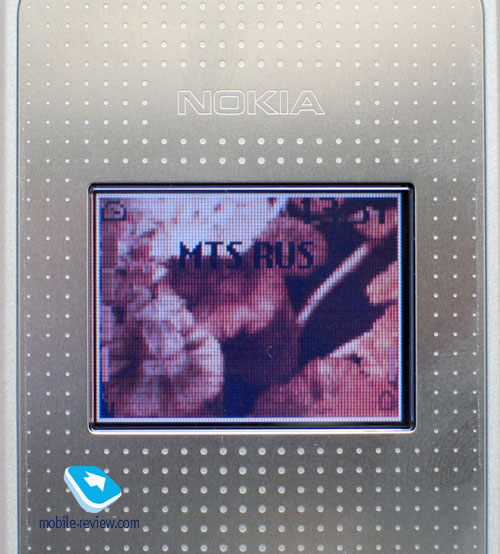
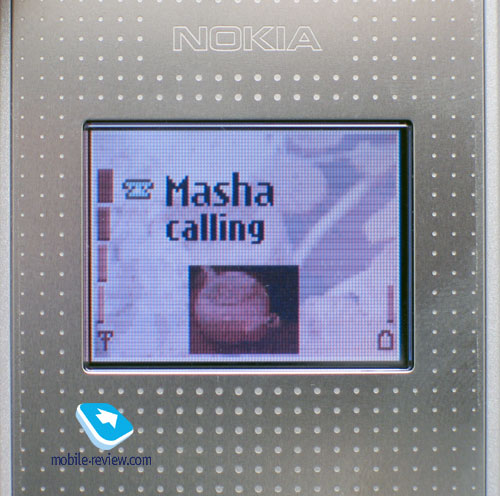
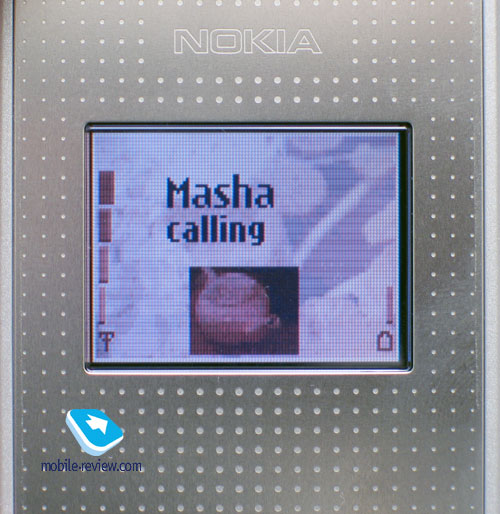

STN-matrix fades in the sun and practically such screen is not so good. That's not an accident
that many Japanese manufacturers have already outgrown the malady when an external screen
had to be colour. A monochrome one is integrated more often or a larger colour one (at least, TFT).

A VEGA-camera gap may be seen on the outer surface of the device. There are no interchangeable panels
in the phone and thus its appearance will always remain the same. On the other hand
strength of construction is achieved this way, no any backlash of some parts.
Two volume control buttons may be seen on the left-side surface, they have a good
motion and are comfortable to use during a conversation. Keys on the right side are
alternated with an IrDA gap, one of them is responsible for a fast camera call and
another one for activating a Push-To-Talk function.
There is a charger connector and a Pop-Port on the bottom end of the phone.
The phone is possible to open with one hand but it won't seem so easy to everybody.
The dimensions and the weight tell on. Considering the fact the model is for men that's possible
to say the phone is intended for not very miniature ones.
The inner display is 65K TFT and has the resolution of 128x160 pixels (31.7x38.9 mm).
The picture looks well. If to compare the screen with other manufacturers it's
evidently inferior to Motorola, Samsung, Sharp, Sony Ericsson but beats the ones in Siemens and other models by Nokia.
It behaves well in the sun and fades not so much. The screen shows up to 6 text lines and two service ones.
The grains are rather large and are noticeable when loading large pictures (the device is
much better than last models by Siemens and takes intermediate position).

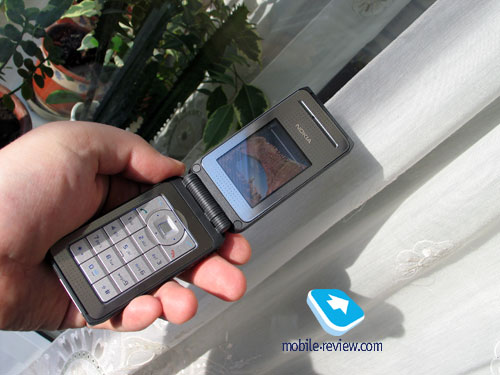
A keypad is really worth a delight, the keys are large and very comfortable. That's well known that
models of big size provide comfortable keypad in the majority of cases and this one is not an exclusion.
That's pleasant to work with plastic keys and a blue backlighting is seen almost in all the conditions.

The device is equipped with a 760 mAh Li-Ion battery and according to the manufacturer it's capable of working
up to 4 hours in the talk mode and up to 270 hours in the standby mode.
We tested the device in Moscow and it worked for about 4 days with 10-15 minutes of talk time a day and
about 5-10 minutes of using other functions. If using more intensively the working time will
decrease not so much and will get about 3 days.


Menu
A possibility to switch from this or that function to other capabilities
of the device may be referred to the advantages of the interface. For example,
when choosing a picture as a wallpaper, you look through the folders and then
you may set the picture or adjust its contrast from the Option menu using the
left soft key. It is pleasant that the additional possibilities appeared, but
we are disappointed that many actions that were committed with one touch earlier
are to be confirmed now. The phone is controversial, on the one hand the number
of possibilities grew, on the other hand the time of making different operations
also became longer, not all the menus are logical and that also makes troubles
for unprepared users. I often caught myself at the thought that the phone
lacks for Fast or context menu similar to the one that is used in the phones
by Sony Ericsson.
And the last thing that will seem unusual to Nokia's worshipers. A possibility
to choose this or that item or function is assigned to a press of a joystick but
not to the left soft key.
The menu may be called by pressing the main key and the rows of icons may be seen in the
main menu. Up to 9 icons may be displayed on the screen at the same time
and if there are more of them (for example, SIM - Menu) you may use
a scroll bar.


Moving the joystick in different directions calls this or that
function quickly and that make the work with the phone easier.
Any function (from the list) may be assigned to the right soft key and
a list of the most frequently used menu items may be composed.
Before considering separate functions we'd like to draw your attention to
the distribution of memory. The total memory size is 2.3 MB and 1.6 MB are available
to a user. The limit
on the size of an application in the phone is 128 KB.

Phone book.
It is possible to keep up to 500 names in the internal memory and it is
the maximum number of entries. It is achievable if you enter not
much information for a name, just one or two fields.
And with medium filling, that is 6-7 fields for a name you may keep
about 300 entries but not more.
As it have already become clear it is possible to enter up to 5 numbers for
a name and choose a type of the number (primary, mobile, home, office, fax).
The first entered number becomes a default one and may be changed later if you wish.
When entering the number for the first time, you type in only a name and one
main number, all the other things are committed later from the edit menu.
One may consider this not very comfortable, one will
on the contrary say that keeps only one number for a name.
Both will be right. Considering that similar input is realized in all the phones by Nokia,
we'll surely say that it makes no troubles.
 
 
 


 
E-mail address, site url, post address and text note may be set as extra information
to a number. The one new function should be pointed out, that is USER ID
and it is user indication for the presence service. In general it is like
an ICQ and signals that this or that user from your list is present or not
at the moment. How interesting it will be is not still clear.
A photo may be added to a number (only portrait mode, changing the
photo automatically to a corresponding size). When viewing the information
on the name you won't see the photo automatically, you'll have to open a corresponding
menu item for that.
On the other hand, it is possible to set the view of a name and a corresponding image
in the list. In that mode the icon is not large and doesn't give a good notion of the
photo. Other modes of viewing the list are traditional - only names, names with the primary
number. Numbers from both internal memory and SIM-card memory may be displayed in the
main list.
There is a possibility to assign up to 10 voice tags for names from the phone book.
The function works well even in the street. And traditionally the keys for
speed dialing are from 2 to 9.
There is a possibility to assign up to 100 photos to names. During the
incoming call the number and the photo of the caller are displayed.
The picture is a bit larger than the one you see in the list but still
smaller than it is necessary. You'll have to use your imagination to
finally understand who is in the picture because a reduced photo has
extra artifact.
In general a photo takes a very small part of the screen and it is not
explicable logically. At the moment realization of this function is the worst
by Nokia among all the manufacturers and we hope that in future it will improve.
There are only 5 users' groups in the phone that is not typical for
the phones by Nokia. And a special call melody may be set for a group.
Assessing the whole comfort of the phone book it is possible to
say that it is average. On the one hand, there are a lot of fields in it,
on the other hand its input capabilities are more convenient for working with a PC and
not for the phone.
I'd like to stress that the phone book in general is typical for the
devices by Nokia and there are no any principal changes that means improvements.
The widest possibilities of the phone book are represented in the phones
by Siemens, then follow the devices by Sony Ericsson and only then Nokia.
Messages.
The device supports Nokia's standard - Smart Messaging that allows sending and
receiving melodies and simple black-and-white pictures from the compatible phones.
Also the same standard is supported by Samsung, LG and some new devices by Motorola.
There are up to 10 graphical templates in the internal memory specially
for such messages. Unfortunately, the company's standard limits users
because the alternative EMS standard, which is spread wider today, allows not only to
send melodies and pictures but also format texts.
In European countries EMS standard is very popular and ignoring it
in the products by Nokia may be considered as a big disadvantage. In Russia only
the most popular operators provide the technology and in the regions the presence or absence of this
standard is not so critical. This may be disputable but the absence of EMS is
still a minus for the phones by Nokia.
 
 
 
 
The company considers MMS possibility a complete substitute of EMS.
And really this technology becomes ordinary and more interesting messages
containing photos, colour images, melodies and so on may be created with its help.
A message may be up to 100 KB in size. The realization of MMS in the phone
is rather good, no any troubles appear with it.
 
The device has an integrated mail client that works with POP3/SMTP protocols.
Its capabilities are extremely poor, attachments are not supported and the
device accepts only one Russian coding. Due to the absence of any other
alternatives one may use this mail client but we'll hope that
a Java-application with more capabilities will appear for the 40 platform.
It is rather good that this mail client is also a Java program.
Call lists.
There are three lists in the phone. Every list may contain up to 20
entries. And what is convenient that the date and time of the call are
displayed in the list. Pressing the Call button in the standby mode,
you get the list of the last dialed numbers.

Settings.
Profiles may be activated from this menu or switched quickly by pressing
On/Off button. Every profile may be activated for a period of time and then
the phone turns to the default profile.
Sound alerts may be set for all the events, incoming call for all
the calls or special users' groups. Realization of profiles
in Nokia is one of the best on the market.
 
The screen settings allow to choose its color scheme, wallpaper and a screen saver.
The screen saver is a picture that is displayed in the standby mode when
the backlighting is not active. It is worth choosing one of the preset
pictures, they are seen better in this mode than loaded full colour images.
The interval may be set for the screen saver and then standard digital clock will
take its place.
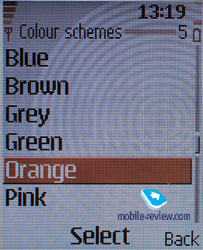

 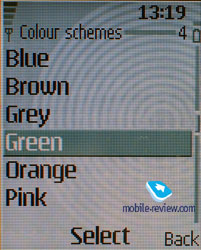
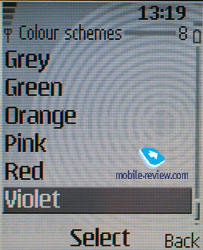
There is an automatic key lock in the phone, you also may set a special security code in
order to nobody could use your phone. A possibility to
set the behaviour of the phone from the beginning appeared for accessories, for example,
to choose a profile that becomes active when connecting a handsfree headset
or a charging device. It is an interesting possibility that allows to adjust the
device according to your idea of the necessity.
Gallery.
Here all the folders that contain different files are gathered, they
have corresponding names. There is a possibility to view the folders as a list,
a list with names or icons. You always may create your own folders, sort files.
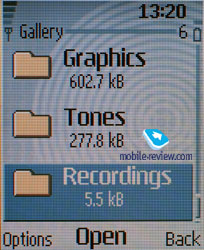 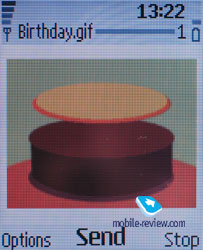
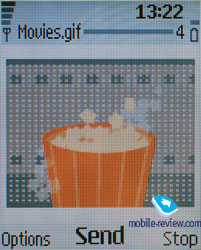
Media.
In this part all the settings connected with multimedia
capabilities of the device are gathered, let's start considering them
from the Camera. The integrated camera allows to take photos with VGA
resolution and in the portrait mode. (80x96 pixels).
The quality of the pictures on the screen is average. After transmitting them
on a PC they do not get worse but still not very good. The settings of the
camera are ascetic, there is a night shooting mode, three types of quality and
compression levels. The files are stored as JPG.
 Sample photos (630 KB, ZIP)
There is a possibility to record video using the device and these are
3GP clips with the duration of 15 seconds (the resolution of 128x96
pixels, with sound - AMR). You may set the maximum duration of a
clip and then have a possibility to record for up to several minutes (0.7 MB and it is 2 minutes).
The quality is average, the sound matches the
pronounced words seldom. On a PC the clips look not very good also and it is more
an entertaining function of the device.
 

Video sample 1 (68 KB, 3GP)
Video sample 2 (108 KB, 3GP)
Video sample 3 (180 KB, 3GP)
Video sample 4 (200 KB, 3GP)
A dictaphone allows to record up to 5 minutes of speech and works during the
conversation. The number of entries is limited only by the free space in
the memory.
3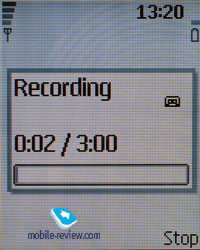
Organizer.
You may keep from 100 to 250 entries in the memory and everything depends on their length,
there is an automatic erasing of the old entries (by the time characteristic).
There is a month and week view of the calendar, the last view has a division into
hours, there is a quick switch to an entered date. There is a possibility to enter up to
5 different events (meeting, call, birthday, reminder, memo). A notification may be
assigned to an event, they may be recurrent.
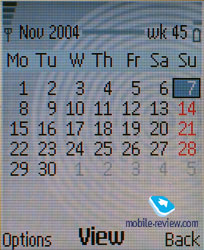
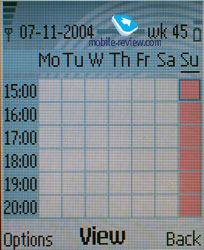
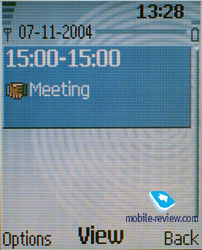 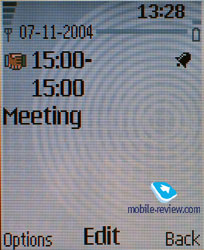

A to-do list allows to create events with three priorities (high, normal and low),
and set a critical date for every event.
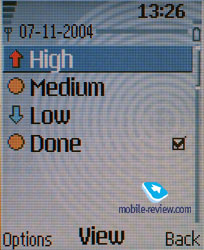 
Every note may contain up to 3000 characters, in general it is more than enough even for
the most fastidious user. Two different font sizes are supported like in messages.
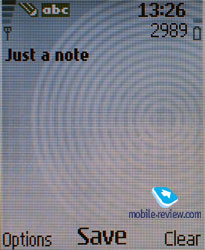
An alarm clock allows to set both once or recurrent signal.
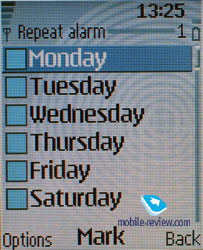
Applications. All the preset Java-applications are here, also standard functions as
a calculator, countdown timer, stopwatch (with intermediate results).
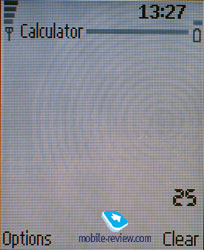 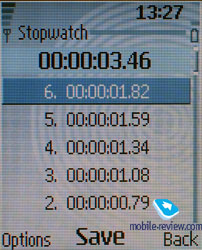
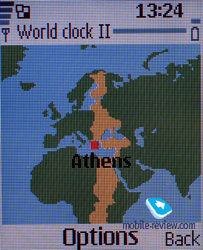 
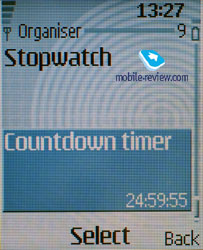
A dictionary that allows to make translations for the following languages should be
pointed out: English, French, German, Spain, Italian.
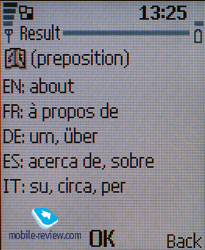
Electronic Wallet is the place where the most important information may be kept
protected with a password. For instance, the data about your credit cards.
On the other hand it won't be very difficult to get the information
if you loose the phone and that is why you'd better keep there only
the most necessary.
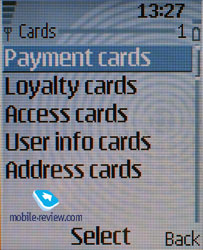
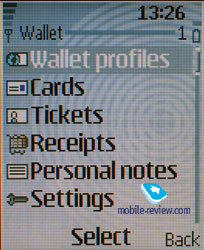
There are 3 games in the phone – Backgammon, Beach Rally, Tetris.
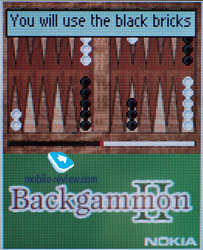 


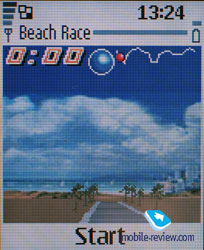 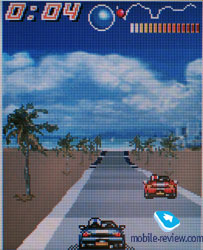  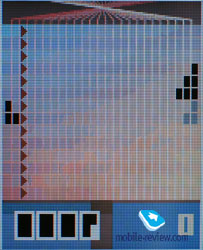
Services.
Wap browser version 2.0 is hidden here. The peculiarity of the phone is that
there is only a possibility to set the access point in the GPRS settings and choosing
it is possible from a profile for the wap-browser.
All other settings have to be either loaded to the phone from the
beginning or provided by the operator via a network.
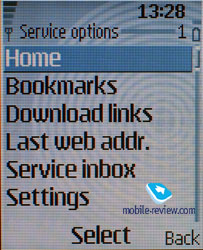
Productivity.
According to the Jbenchmark 2.0 test the score for the device is 264.
And this is a bit less than for Nokia 6230 but much more than for all
the rival phones of the same class. The phone seems to be a champion
in this parameter.
Synchronization with PC.
The device supports working with a standard Nokia Suite even using an IrDA.
The presence of EGDE doesn't seem necessary, for the moment of the
commercial appearance of the service with an acceptable price the
majority of people using Nokia 7260 will already have bought another devices.
Impressions
As for the quality of the connection the model is typical for Nokia, no any troubles,
everything is all right.
The volume of the polyphonic call signal
is rather high and it may be heard in different conditions.
The vibrating alert is average in power, that's not quite clear if this is the size of the body or
its working scheme tell upon. That's interesting that despite the manufacturer
declaims 40-tones polyphony the device doesn't sound like similar phones by Korean companies.
The problem might be a memory bank with peculiar instruments used but the fact remains the fact
and the call signal is a weak point of the phones by Nokia. Sometimes new melodies will sound not the way
you'd like to.
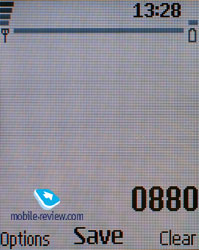 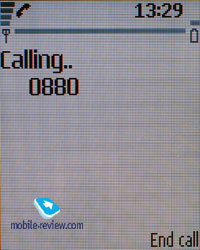
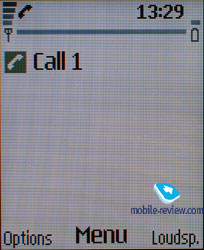 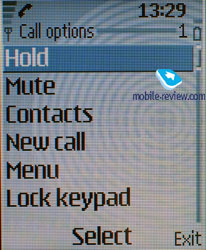
The phone is not anything extraordinary in its characteristics. The external colour screen has a
dubious improvement and the presence of Push to Talk is not still interesting for the majority of
users. In the end this is a typical model by Nokia not distinguished by any peculiarities except
its form-factor and applied materials. That's possible to compare it with
Nokia 7200 in its popularity in the market.
Let's underline that Nokia 6170 is a men device and in some kind is a working horse, just a
try to satisfy the demand of an unpretentious user that needs only a minimum of functions and
a phone of a favourite brand. While choosing rival phones I found myself thinking the feeling
after using the phone was the same as caused by Philips
650, the devices are just identical. That's clear that the internal screen is worse in Philips,
there is no camera, some functions are absent but the impression of the form-factor is the same.
The price at the moment of appearance will be about 350 USD and it's impossible to call it either
little or big. Considering the fact the model is an assortment one and won't have
great sales the price seems acceptable. The ones who got used to the products by Nokia
and do not need any extra but only a basic functionality should
have a closer look at the device.
Eldar Murtazin (eldar@mobile-review.com)
Translated by Maria Mitina (maria.mitina@mobile-review.com)
Published — 18 November 2004
Have something to add?! Write us... eldar@mobile-review.com
|



















































































